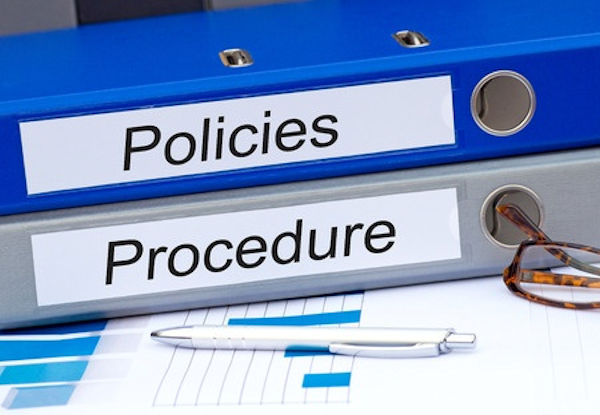Warnings and Work Practice Controls
When elimination, substitution, and engineering control methods are insufficient to protect workers, warnings and work practice controls should be used. If we can't get rid of the hazard in a JHA step, we'll need to manage exposure to the hazard with safety precautions. Methods to eliminate or reduce employee exposure to hazards include:
- placing warning signs, tape, cones, etc., to make workers aware of the hazard within a step
- developing new procedures and practices to reduce the frequency/duration of exposure
- revising work schedules to reduce the frequency/duration of exposure
- training
Personal Protective Equipment
Many procedures developed with a JHA will include the need to use PPE. Examples of PPE include respirators, hearing protection, protective clothing, safety glasses, and hardhats. PPE is acceptable as a control method in the following circumstances:
- when engineering controls are not feasible or do not totally eliminate the hazard
- while engineering controls are being developed
- when safe work practices do not provide sufficient additional protection
- during emergencies when engineering controls may not be feasible
Now let's take a look at what our sample JHA looks like now that we've identified some hazards and their related preventive measures in each step. Click on the button to see the sample JHA form.
JOB: LOADING PRODUCTS INTO TRAILER
| BASIC JOB STEP | HAZARDS - POSSIBLE INJURIES | PREVENTIVE MEASURES |
|---|---|---|
| 1. Spotter: Spot position of trailer as it nears loading dock. | Spotter could be caught between trailer and dock. | Stay clear of the rear of the trailer as it is being backed into position. Keep others away from the area. |
| 2. When trailer is in position, turn engine off, set parking brake, and notify forklift operator. | Driver could be injured if he/she jumps off the truck. | Never jump off the cab or back of the trailer. |
| 3. Set chocks. | Driver could strike head on trailer. Driver could trip, slip, fall while in the dock well. |
Avoid striking the trailer when setting the wheel chocks. Use handrails and use care when walking on slippery surfaces. |
| SAFE JOB PROCEDURE | ||
Knowledge Check Choose the best answer for the question.
2-3. What is the next best control strategy to consider in a JHA if elimination, substitution, or engineering controls are not suitable?
You forgot to answer the question!

